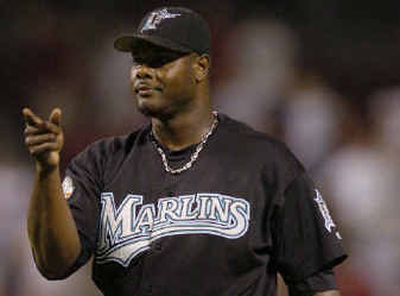Relievers enjoying a new perception

HOUSTON — When they were teammates on the Twins in 1991, Jack Morris used to razz Rick Aguilera about Aguilera’s cushy, one-inning-at-a-time job as a closer.
“The only reason you’re the closer is because you can’t cut it as a starter,” he would tell Aguilera.
“He’d say, ‘I could be a starter,’ ” Morris said.
Then in 1996 the Twins put Aguilera in the rotation, and he stumbled to an 8-6 record with a 5.42 earned-run average and averaged less than six innings a start. He was back in the bullpen by 1997.
Morris, the classic workhorse starter during a career highlighted by the epic, 10-inning performance in Game 7 of the ‘91 World Series, doesn’t figure to have much sympathy for failed starters who find glory in niche roles.
But the recollection is less a knock on Aguilera, a three-time all-star as a closer, than an example of how the perceptions of pitching have changed in barely a generation.
The best example might be the rosters for Tuesday night’s All-Star Game.
Nine of the 24 pitchers are relief pitchers.
As recently as 1972, the American League didn’t have any relievers on its All-Star roster.
“I saw the total evolution of the bullpen firsthand,” said nine-time All-Star Goose Gossage, who went from middling starter to all-star closer to Dennis Eckersley’s setup man during his 13-year career. “In ‘72 when I came up, the bullpen was a junk pile where old starters who couldn’t start anymore went.”
That’s an attitude that persisted well into the 1980s, based largely on fact. Even today most relief pitchers are former starters who, for lack of enough effective pitches or enough lasting power, were moved to the bullpen.
But the big difference today is that the value placed on relievers seems to be rising almost annually. Just in the past decade, teams have begun identifying minor leaguers to groom into relievers.
“More in the last five years,” Twins general manager Terry Ryan said. “It’s something I’m not a big advocate of, but with some guys you’ve got to be careful, because delivery-wise and the way they go about their business might be detrimental to keeping them healthy.”
The advent of pitch counts in the ‘90s is widely blamed for the decline of workhorse starters and the rise of multiple relief specialists.
“That’s the way they teach kids,” Morris said. “Think about it. Baseball was played for a century, and for almost a century guys were completing games and going 250-plus innings a year. And all of a sudden now we specialize, and guys can’t do that anymore?
“They’re supposed to be bigger and stronger, we’re supposed to have more knowledge of the human anatomy, we’ve got fitness coaches, we’ve got weight rooms, we’ve got everything in the world to make them better, and they can’t go as far as the guys who used to pitch 100 years ago.”
Mostly because they don’t have to. With more money invested into every pitching arm, those arms tend to get a little more nurturing in the development process.
And, as reliever Sparky Lyle said 30 years ago, “Why pitch nine innings when you can get real famous pitching two?”
Two of the nine relievers on Tuesday night’s rosters aren’t even closers; the New York Yankees’ Tom Gordon and Anaheim’s Francisco Rodriguez are setup men for the closers. Setup guys in the All-Star Game? That’s just the latest in the trend toward specialization and, as Gossage says, “babying pitchers.”